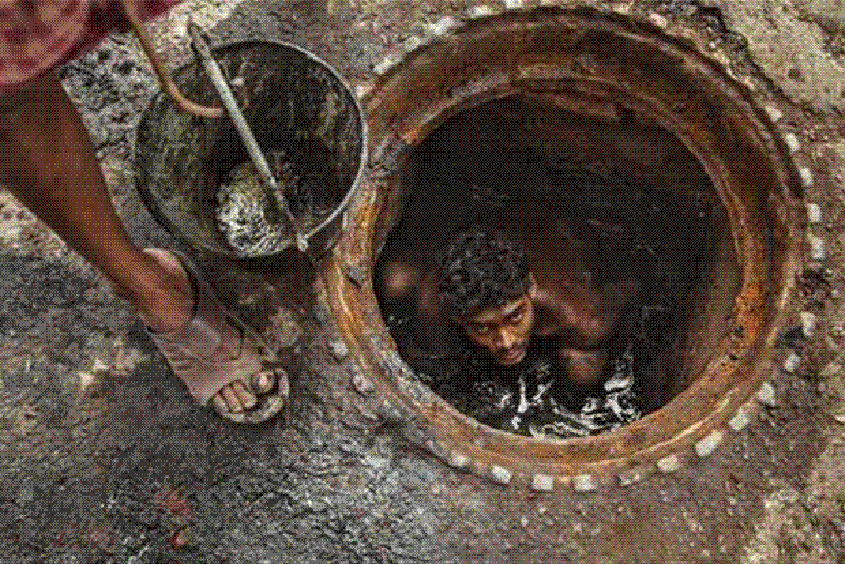According to the SKA, 1,300 manual scavengers died across the country in 2016. In the same time period, 516 civilians were killed in terrorism in India, as per the data of the South Asia Terrorism Portal (SATP), an organisation that helps in critical assessment and analysis of terrorism in South Asia. Recently, the death of two manual scavengers in Delhi has sparked a debate on the state of manual scavenging in the country.
“Though the practice of manual scavenging was banned in 2013 under the Prohibition of Employment as Manual Scavengers and their Rehabilitation Act, 2013, the death of two labourers while manually cleaning sewage in the capital is shocking,” said Brajesh Kumar, coordinator of the SKA Delhi zone.
“Though multiple laws prohibit manual scavenging and despite the Supreme Court’s strict directions, things have not changed and 1,300 people died across the country in 2016 in septic tanks or sewers while doing this job. For cleaning septic tanks or sewers, workers often descend into the tank filled with noxious gases, with no protective gear. Often the worker has to go deep inside the tank to clean it,” Kumar said.
Although the Delhi State Legal Services Authority had identified 233 manual scavengers in the capital in 2013, of whom 104 were government employees, this figure, say experts, is misleading since there is no way to determine the exact number of people working “privately” in manual scavenging.
The three Municipal Corporations of Delhi have 2,382 nala beldars, or drain cleaners, on their rolls. Officially, these employees are meant to keep small drains free of silt, but there is nothing that says they cannot be made to clean deeper sewers. The Delhi Jal Board, too, has full-time sewer cleaners. Besides, civic agencies often outsource the dehumanising work to contractors, who find contract labour for such assignments. This allows the agencies to escape culpability in the event of accidents.
A study by Praxis India, a non-profit Bangalore-based organisation doing research on issues related to urban space, revealed the occupational and health hazards and perils of contracting faced by sewerage workers of Delhi. Praxis India’s study shows that every year, over 100 sewerage workers die in Delhi after entering drains and manholes with high temperature, slippery walls, floors and toxic gases.
“Most sewerage workers, due to lack of medical attention, suffer from several dreaded diseases like cardiovascular degeneration, musculoskeletal disorders, infections, skin problems and respiratory ailments,” said Saron Thambola, a member of Praxis India.
“Apart from health hazards, the other issues manual scavengers face are low pay, caste-based discrimination, prejudice, lack of occupational safety and apathy of government
Jayanti Majumdar, a Dalit scholar at the Mahatma Gandhi Peace foundation, told The Sunday Guardian: “The problem of manual scavenging is also a problem of caste. Only law can’t prevent manual scavenging; society has to respond and render support to end this inhuman practice. Contractualisation has worsened the situation of manual scavengers. Political parties should ensure they are not only taking votes in the name of caste, but also working for those castes.”

